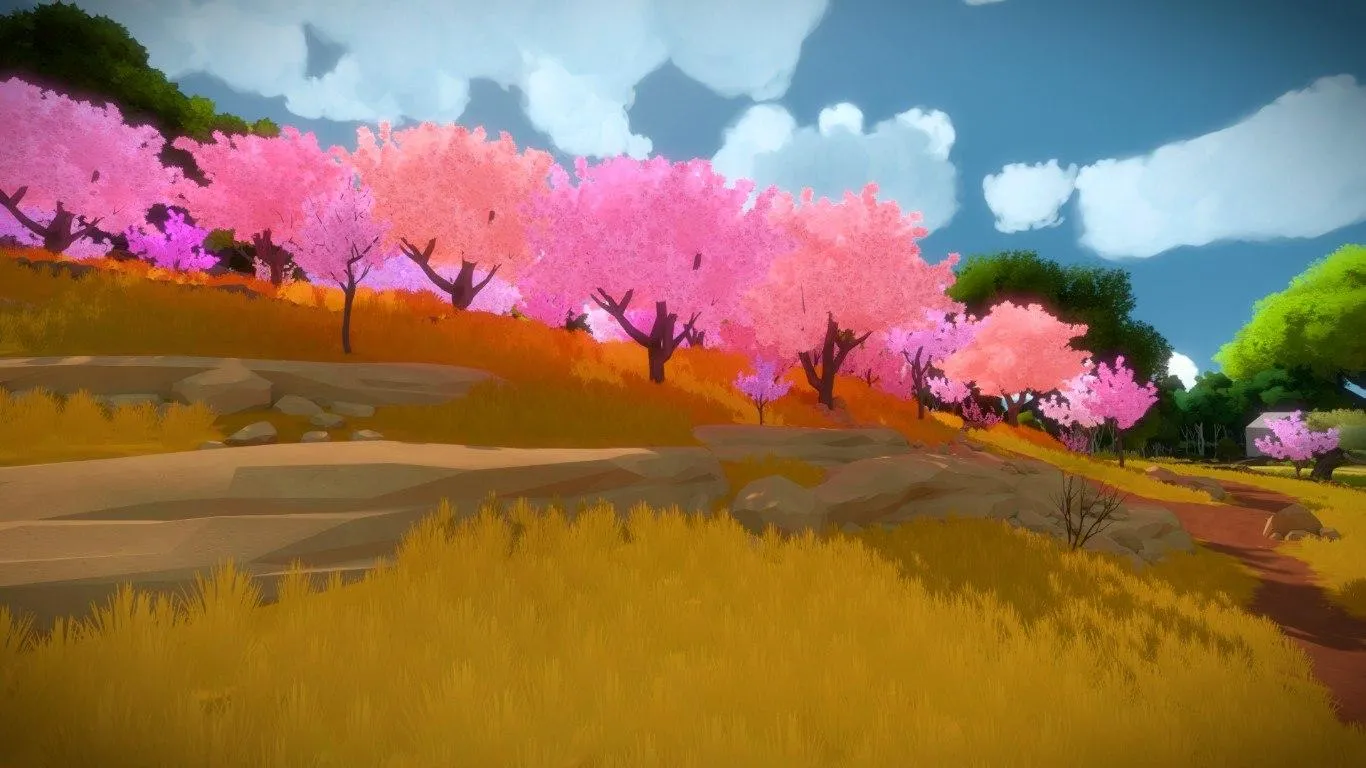
Unraveling The Witness: A Deep Dive into Jonathan Blow’s Puzzle Masterpiece
Contents
In June 2008, a small puzzle game quietly debuted on the Xbox 360. That game was Braid, the brainchild of Jonathan Blow, an independent American game developer who poured his own resources into its creation for three years. Over the next year, Braid found its way onto PC and PlayStation 3, garnering widespread critical acclaim. It even became a pivotal title in the global gaming landscape, significantly contributing to the indie game development boom that continues to this day. In 2009, Blow announced his next project, The Witness, another puzzle-adventure game.
After seven long years of development, The Witness finally launched in late January 2016, carrying the weight of Blow’s and his team at Thekla, Inc.’s expectations. With such an extensive development period for an indie title, the question arose: could The Witness replicate the success of Braid? Let’s explore the noteworthy aspects of this puzzle game, which Blow himself confirmed contains over 600 puzzles, offering potentially hundreds of hours of gameplay.
An Island Shrouded in Mystery
 alt text describing image 1: Player standing before a locked gate at the start of The Witness
alt text describing image 1: Player standing before a locked gate at the start of The Witness
You awaken in an underground tunnel, your memory blank. Ascending a staircase and passing through two doors, you emerge into a small, picturesque garden, enclosed by towering walls and a large gate. After some interaction with electronic panels and the puzzles they present, you finally unlock the gate and leave the garden. Congratulations! You’ve solved the first few of hundreds of puzzles on the island of The Witness.
Scattered across the game’s isolated island, from natural landscapes to man-made structures, are hundreds of these electronic panels, each hosting a unique puzzle. These puzzles typically involve maze-like line drawings, intricate networks of intersecting lines.
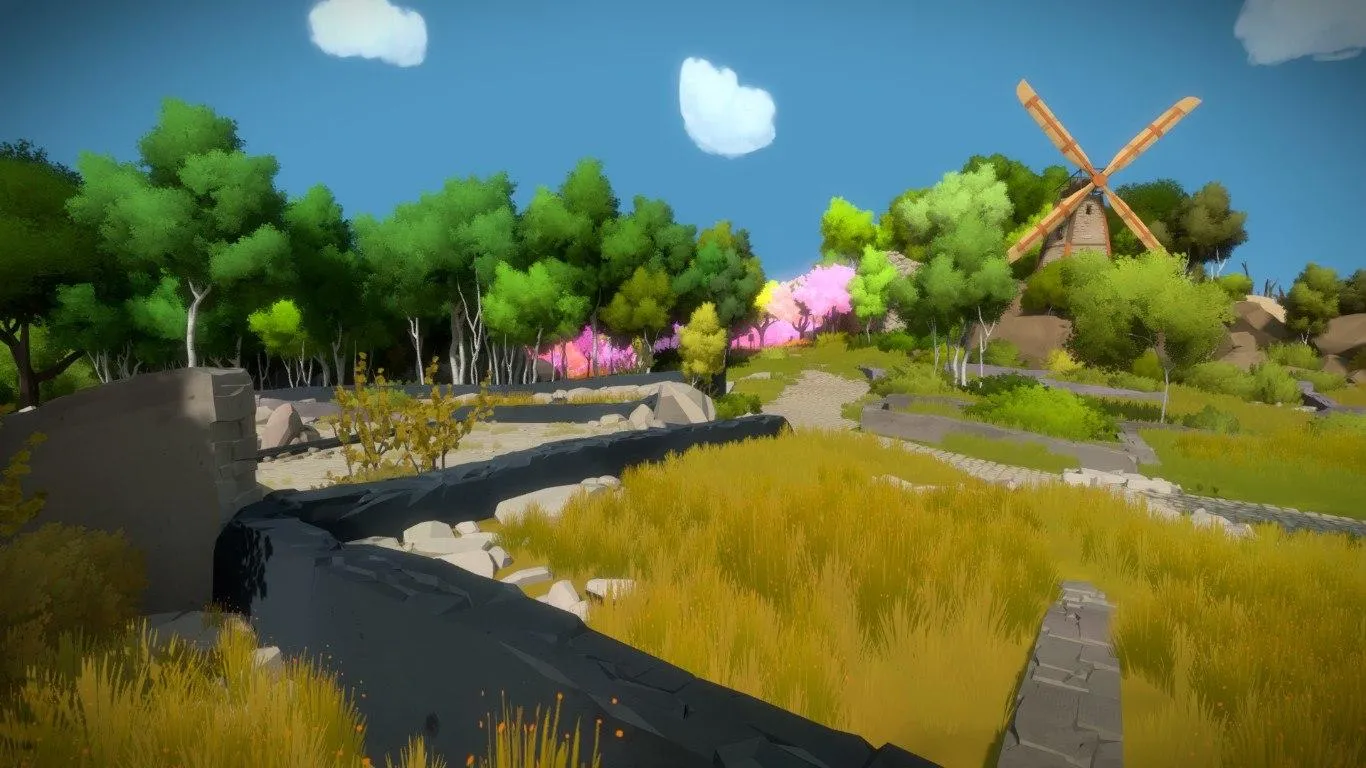 alt text describing image 2: Close-up of a line puzzle panel in The Witness showing the start and end points
alt text describing image 2: Close-up of a line puzzle panel in The Witness showing the start and end points
Your task is to draw a continuous line through these mazes, adhering to specific rules for each puzzle. The game doesn’t explicitly state these rules; you must decipher them by observing the maze itself and its surrounding environment. Sometimes you’ll interact directly with the panels, other times you’ll manipulate objects in the world to solve the puzzle.
Through each solved puzzle and collected audio log, you gradually unravel the mystery surrounding the island and your own identity. This mystery is The Witness‘s greatest strength, constantly prompting questions about who you are and what challenges lie ahead, fueling your drive to explore. Every puzzle, regardless of difficulty, provides a sense of accomplishment and encourages you to tackle the next.
The Witness embraces an open-world design, allowing you to freely explore and choose which puzzles to solve in any order. Encounter a particularly challenging puzzle? Simply leave it and explore other areas, solving different puzzles before returning to conquer the more difficult ones.
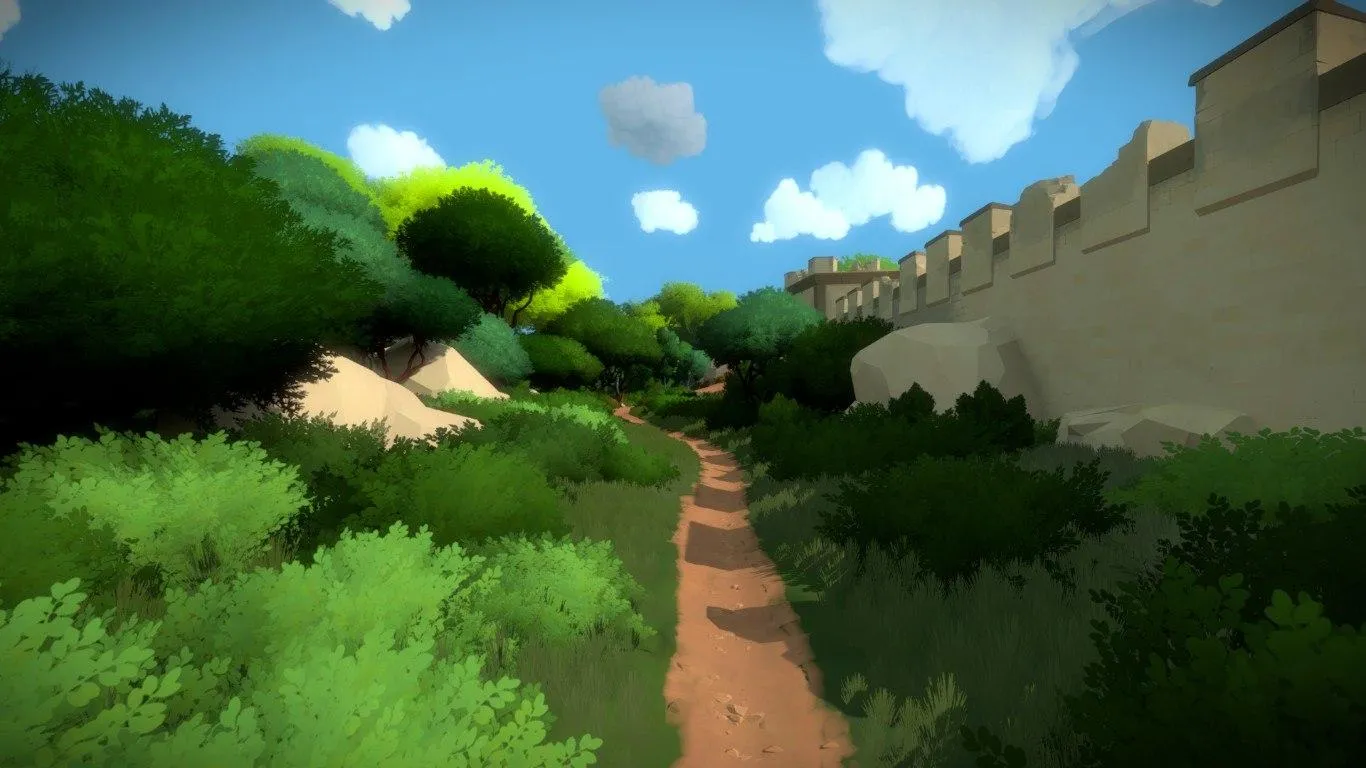 alt text describing image 3: The Witness's vibrant environment showcasing lush vegetation and a distant structure
alt text describing image 3: The Witness's vibrant environment showcasing lush vegetation and a distant structure
A Visual Feast
A striking aspect of The Witness is its vibrant and luminous aesthetic. The developers skillfully employ contrasting colors between objects and environments, highlighting every detail in the game’s world. From forests and beaches to intricate structures, The Witness is a true work of visual art. However, some players may find the visuals a bit too bright, requiring adjustments to screen brightness to prevent eye strain.
One Puzzle Type: A Double-Edged Sword
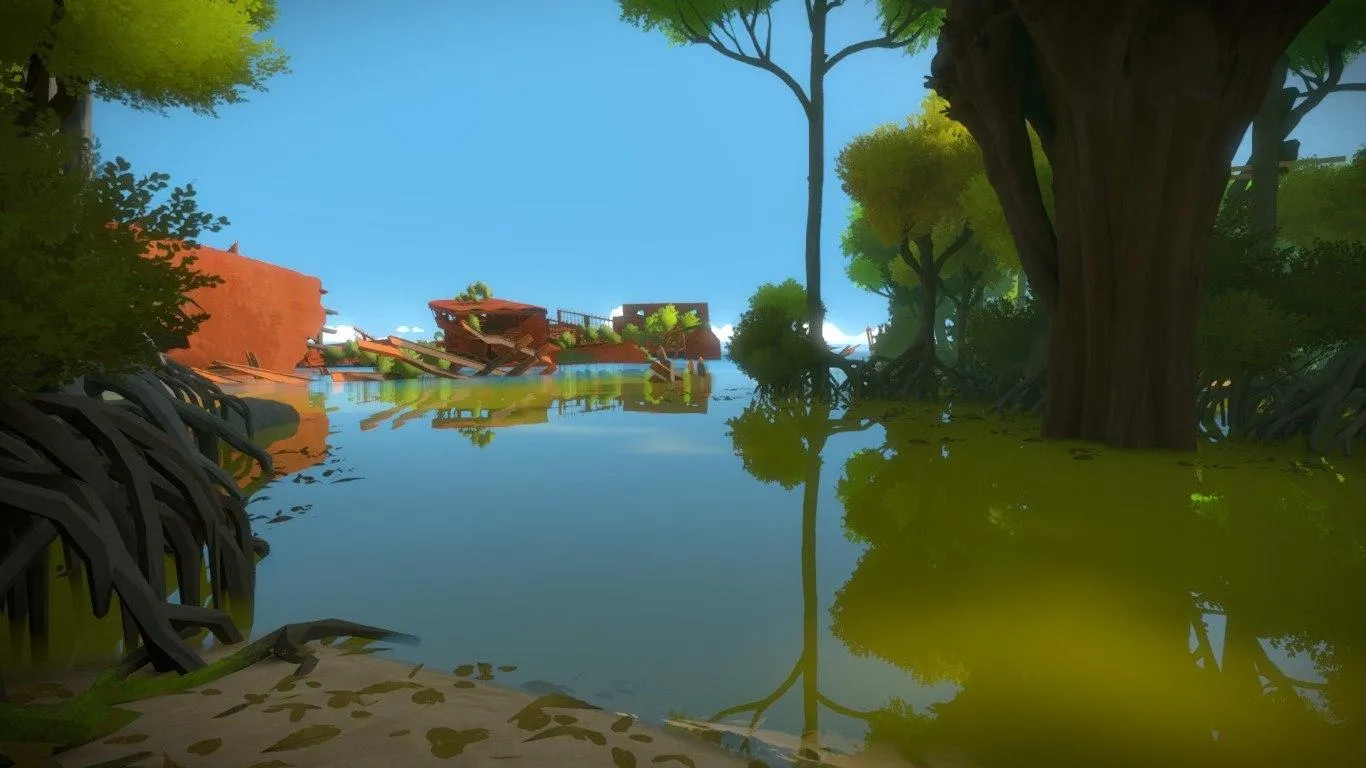 alt text describing image 4: A puzzle panel incorporating environmental elements, a tree branch obscuring part of the puzzle
alt text describing image 4: A puzzle panel incorporating environmental elements, a tree branch obscuring part of the puzzle
With hundreds of puzzles, The Witness promises many hours of mental exercise. However, throughout these hours, the puzzles remain fundamentally the same: drawing lines through mazes on electronic panels, following the unique rules of each puzzle. There are no other puzzle types—no object arrangement, no word puzzles, nothing to break the core mechanic. While engaging and captivating, greater variety in puzzle types would undoubtedly elevate the experience further.
Missing Pieces: Minor Shortcomings
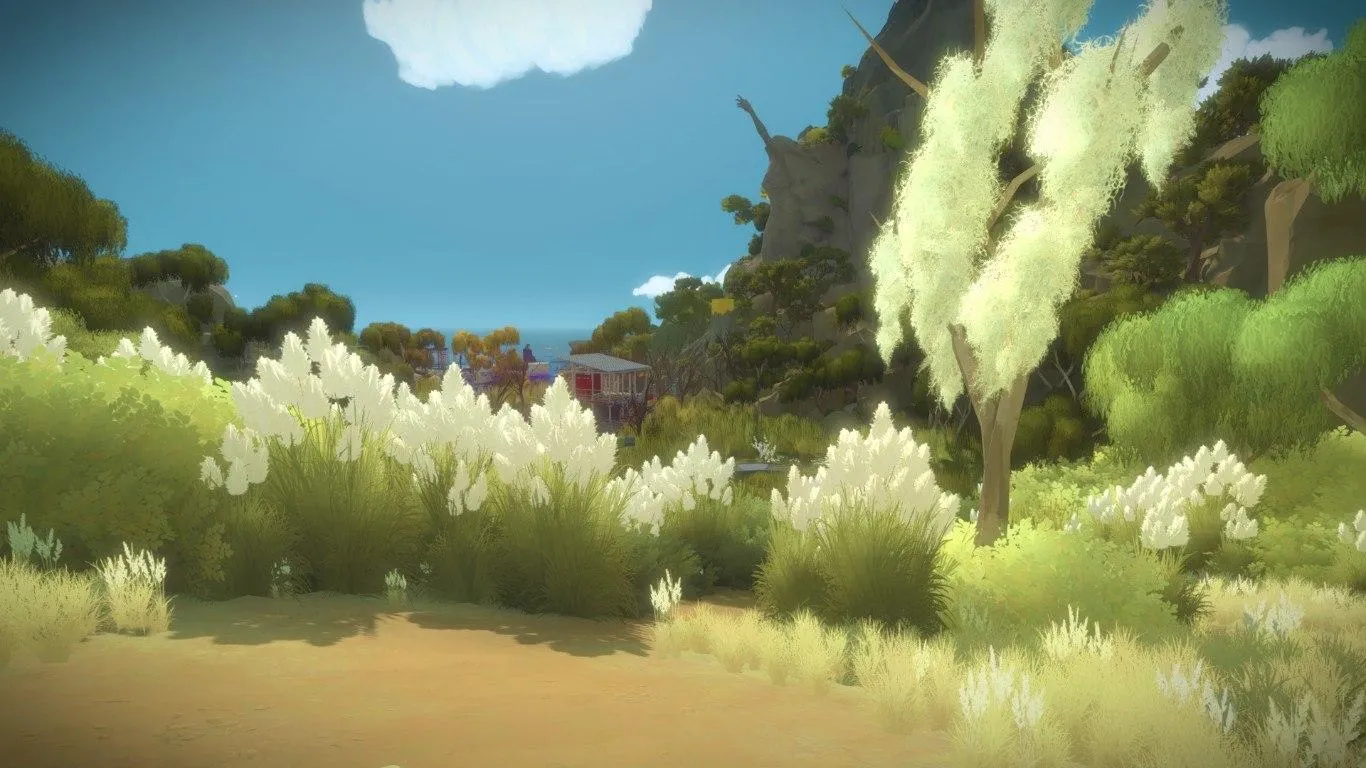 alt text describing image 5: View of a pathway leading through a forested area in The Witness
alt text describing image 5: View of a pathway leading through a forested area in The Witness
Beyond the single puzzle type, The Witness suffers from a few minor shortcomings. Firstly, the game lacks a musical score. The primary audio accompaniment is the monotonous sound of the player character’s footsteps. A game of this caliber deserves a fitting soundtrack to enhance the atmosphere and provide a more immersive experience. Additionally, the game offers limited customization options, with no control remapping or resolution adjustments. Furthermore, the windowed mode is poorly implemented, with the mouse cursor frequently leaving the game window, interrupting gameplay.
Conclusion: A Masterpiece with Room for Improvement
The Witness is a captivating and challenging puzzle game with a beautiful, vibrant world and hundreds of puzzles to solve. Its open-world design and mysterious narrative provide a compelling drive to explore and unravel the island’s secrets. While the lack of puzzle variety and minor technical issues detract slightly from the experience, The Witness remains a remarkable achievement in game design and a must-play for puzzle enthusiasts.





Comments (0)